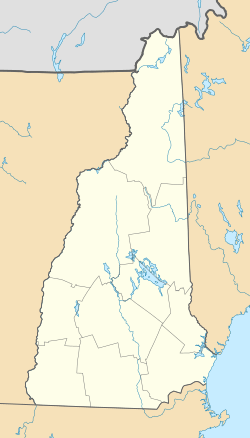Browns River (New Hampshire) facts for kids
Quick facts for kids Browns River |
|
|---|---|
| Country | United States |
| State | New Hampshire |
| County | Rockingham |
| Towns | Seabrook, Hampton Falls |
| Physical characteristics | |
| Main source | Seabrook 40 ft (12 m) 42°53′49″N 70°52′7″W / 42.89694°N 70.86861°W |
| River mouth | Hampton Harbor Seabrook, Hampton Falls 0 ft (0 m) 42°53′44″N 70°50′7″W / 42.89556°N 70.83528°W |
| Length | 2.9 mi (4.7 km) |
| Basin features | |
| Tributaries |
|
The Browns River is a small river in southeastern New Hampshire, United States. It's about 2.9-mile-long (4.7 km), which is less than 5 kilometers.
Most of this river is a 'tidal estuary'. This means it's a place where fresh river water mixes with salty ocean water, and its water levels go up and down with the ocean tides.
The Browns River is an important part of New Hampshire's biggest salt marsh. This marsh is a huge wetland, covering over 3,800 acres (15 km2) (about 15 square kilometers).
Where Does Browns River Flow?
The Browns River starts in a town called Seabrook. It begins just east of a big road, U.S. Route 1.
Soon after it starts, the river flows into the large salt marsh. This is where the ocean's tides affect the river.
For most of its journey, the river acts like a border. It separates the towns of Seabrook and Hampton Falls.
The river also flows past the north side of the Seabrook Station Nuclear Power Plant.
Finally, the Browns River reaches Hampton Harbor. Here, it joins another river called the Hampton River before flowing into the ocean.
Why is Browns River Important?
The Browns River is a key part of New Hampshire's largest salt marsh. Salt marshes are very special places.
They are like nurseries for many kinds of fish, crabs, and birds. These animals find food and shelter in the marsh.
Salt marshes also help protect the land from storms and filter pollution from the water. This makes the Browns River an important part of the local environment.



